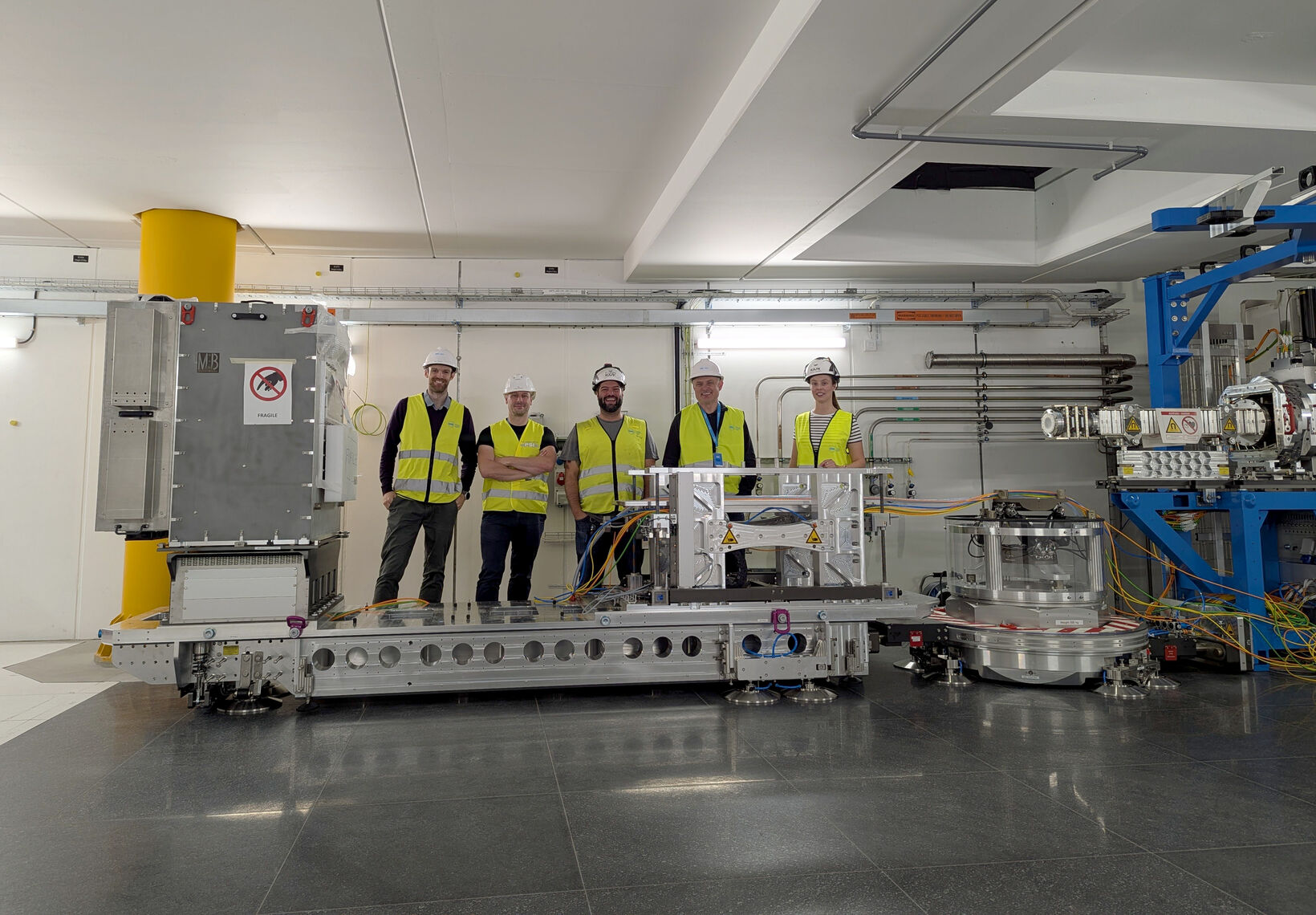
The ESTIA instrument team has taken an important step forward with the successful testing of the instrument’s detector arm, developed and delivered by Swiss in-kind partner, the Paul Scherrer Institute (PSI). This advancement reflects the close collaboration between ESS and PSI, who are working side by side to bring this novel neutron reflectometer online.
During the test, the detector arm, a moving structure designed to carry the detector in a precise arc around the sample point, was operated for the first time under near-final conditions. The test setup used a reduced 1000 kg load, while the final system will be close to 2000 kg when fully assembled.
The movement relies on air pads that lift the entire assembly 50 micrometres above a precision-polished granite floor, allowing smooth, controlled motion. A small friction wheel on one end drives the structure around a circular arc while the other end is locked into a large bearing around the sample stage. This ensures the detector maintains an exact distance of four metres from the sample, with angular positioning accurate to 0.0005 degrees (35 micrometre positioning accuracy at the detector position).
The system worked as designed on the first attempt, underlining the sucessful collaboration between ESS and PSI. The next step will be to install the analyser housing, a key PSI contribution that keeps the neutron beam in a helium atmosphere up to the detector. This reduces scattering from the air, ensuring a low background. Once in place, final cable routing and repeat testing will follow in November, preparing ESTIA to receive first neutrons, expected in 2026.
About ESTIA
ESTIA is one of the 15 cutting-edge neutron instruments currently under construction at ESS. Designed and developed by PSI, ESTIA is a state-of-the-art focusing neutron reflectometer optimised for studying thin layers and surfaces.
At the heart of ESTIA is the “Selene” neutron guide optics, a lens-like system that focuses the neutron beam onto samples as small as the head of a pin. Inside the instrument cave, the precision granite floor supports both the sample stage and the detector arm, with components floating on air pads for highly accurate positioning. ESTIA also accommodates experiments under magnetic fields and cryogenic temperatures, enabling the study of materials in extreme conditions.
Science with ESTIA
ESTIA will allow researchers to reveal the invisible details of the thinnest layers of materials, with applications across Quantum materials, energy, health, and functional materials. Examples include:
- Quantum Materials: probing the ultra-thin magnetic layers used in computer hard drives and next-generation spintronics devices;
- Energy: understanding how ions move inside the layered structure of batteries, key to improving performance and lifetime;
- Health: exploring the structure of biological membranes in cells, supporting the development of improved medicines;
- Functional Materials: investigating protective coatings for aircraft parts or solar cells.
Find out more on the ESTIA instrument page.
























